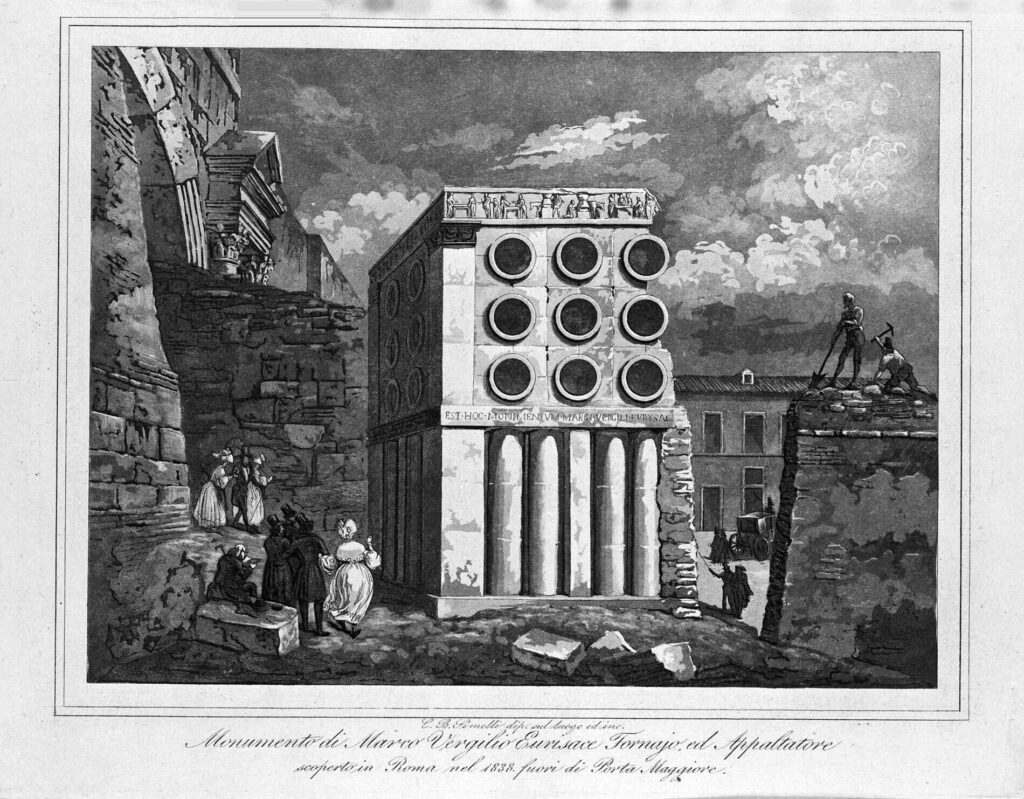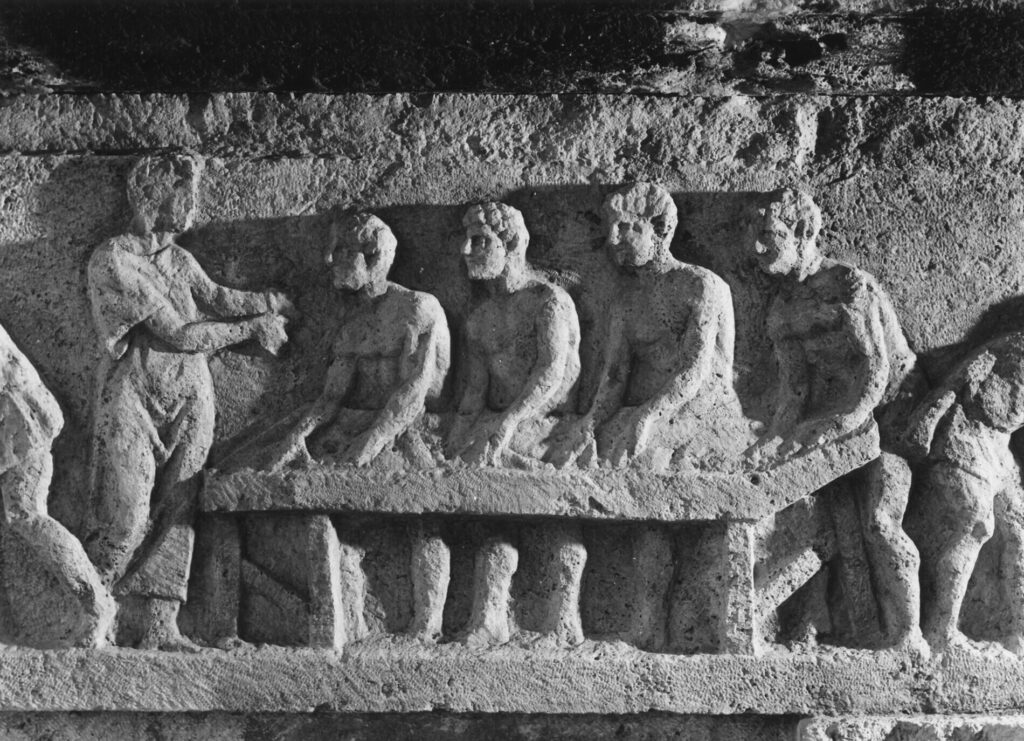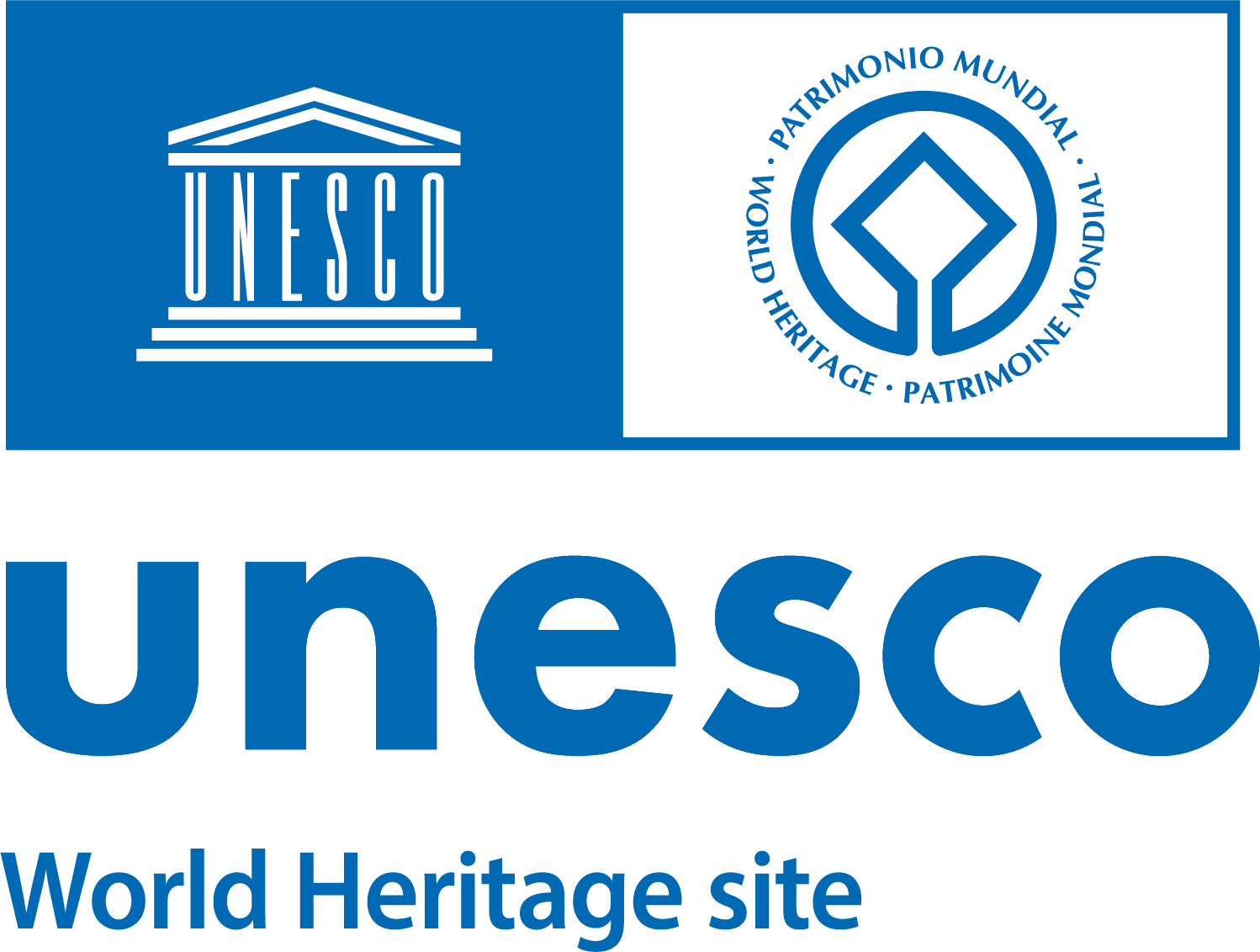In 1838, with the urban development of the Porta Maggiore area, a tomb situated very close to the gate was unearthed.
The name of the wealthy owner, a baker, a freedman of Greek origin, appears in an inscription repeated on the three preserved sides of the tomb: “this is the tomb of Marcus Virgilius Eurysaces, baker, public supply contractor and apparitor”. The tomb, built between 30 and 20 BC, was possibly erected for the untimely death of his wife Atistia, given that her marble cinerary urn in the shape of a madia or sideboard, usually used for storing bread, was found.
The semi-circular elements of the tomb are reminiscent of the kneading equipment used for bread-making, while the frieze illustrates the bread-making stages.
On the front elevation, facing the point of entry into Rome, travellers could admire the couple in a relief, today preserved in the Museo Montemartini, and marvel at the frieze’s lively depiction, enhanced by the polychrome that has now faded away.


2. Tomb of Eurysaces. Detail of the relief.


